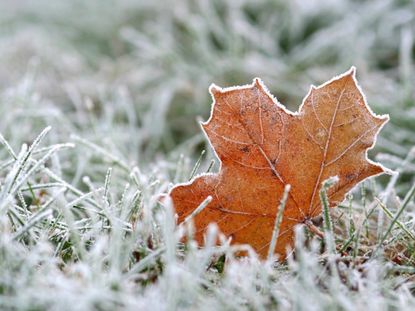As the days grow shorter and temperatures begin to dip, it’s time to think about preparing your garden for the inevitable fall frost. Frost can be damaging to many plants, especially those that are more delicate or tender. Here at Peterborough Landscape Supply, we’re here to guide you through the essential steps to protect your garden and ensure your plants thrive even as the seasons change.
Understanding Fall Frost
Frost typically occurs when the temperature drops below 32°F (0°C) during the night. This can happen even in early fall, so it’s important to be vigilant. The signs of frost can vary, but common indicators include a chilly morning air, a white frost covering grass, and the wilting of sensitive plants.
Plants to Protect
- Tender Annuals: Plants like petunias, impatiens, and marigolds are particularly vulnerable. As soon as frost is forecasted, it’s best to bring these potted plants indoors or cover them with blankets or burlap.
- Vegetables: Many summer vegetables, such as tomatoes, peppers, and cucumbers, are sensitive to frost. If you haven’t harvested them yet, be sure to do so before the frost hits. For plants still in the ground, consider using row covers or blankets to provide some insulation.
- Tropical Plants: If you have any tropical plants, like hibiscus or certain varieties of ferns, these should be brought indoors before the first frost. They thrive in warm conditions and will not survive the chill.
- Delicate Perennials: While many perennials are hardy, some, like certain varieties of geraniums and salvias, need protection. Mulching around the base can help insulate their roots.
Steps for Frost Preparation
- Monitor the Weather: Keep an eye on local forecasts so you can prepare ahead of time. A sudden drop in temperature can catch gardeners off guard.
- Covering Plants: Use frost cloths, blankets, or even old sheets to cover plants overnight. Be sure to remove the covers in the morning to let the plants breathe and soak up sunlight.
- Watering: Water your plants a day or two before a frost is expected. Moist soil holds heat better than dry soil, which can provide additional protection against frost.
- Mulching: Apply a thick layer of mulch around the base of your perennials and in your vegetable garden. Mulch not only helps retain moisture but also insulates plant roots from the cold.
- Container Plants: For potted plants, either bring them indoors or group them together in a sheltered spot. If indoors isn’t an option, consider placing them in a garage or shed where temperatures remain milder.
- Harvest Wisely: Don’t forget to harvest any ripe fruits and vegetables. Some crops can be picked a bit early to avoid frost damage, while others can withstand a light frost.
Post-Frost Care
After the frost has passed, inspect your garden carefully. Remove any damaged leaves or stems to encourage new growth. For hardy perennials, trim back dead foliage and apply fresh mulch if needed. Remember, a little frost can actually benefit some plants by signaling them to prepare for dormancy.
Conclusion
With a little preparation and care, you can protect your beloved plants from fall frost. At Peterborough Landscape Supply, we’re here to help you every step of the way. Whether you need frost covers, mulch, or advice on specific plants, we have the resources to ensure your garden remains healthy and vibrant all year round. Happy gardening!

